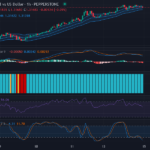
Arizona’s Bold Move: New Voter Verification Measures to Ensure Election Integrity
Tháng 4 14, 2025
In-depth Technical Analysis Confirms Bullish Momentum for GBP/USD Pair – 15/04/2025
Tháng 4 14, 2025Japan’s Finance Minister Shunichi Kato Addresses Foreign Exchange Volatility
Japan’s Finance Minister, Shunichi Kato, has made notable statements regarding the increasing concerns over foreign exchange (FX) volatility, aligning closely with similar sentiments expressed by the United States. Kato’s remarks shed light on the potential economic implications of erratic currency fluctuations and the steps being taken to mitigate these effects, reinforcing the commitment to market-driven currency values while maintaining stability.
Concerns Over Excessive FX Volatility
In his recent addresses, Kato emphasized the undesirability of excessive FX volatility, indicating that it poses significant risks to both economic and financial stability in Japan and the broader global market. The Finance Minister’s acknowledgment that both Japan and the United States share a critical perspective regarding these fluctuations signifies a coordinated approach towards currency stabilization. This stance not only reflects Japan’s commitment to maintaining a resilient economy but also underscores the importance of global cooperation in financial matters. The implications of erratic USD/JPY movements can lead to unpredictable shifts in trade dynamics, investment strategies, and overall market confidence.
Emphasis on Market Determination
Kato reiterated that foreign exchange rates should be determined fundamentally by market dynamics. This argument reinforces the belief that the forces of supply and demand should naturally dictate currency values, rather than relying heavily on government intervention or speculative activities. By advocating for a market-driven approach, the Finance Minister aims to foster a more transparent and stable FX environment, which could enhance investor confidence, as highlighted in discussions around the GBP/USD currency pair’s current neutral range and limited volatility, reflecting market hesitance as detailed in this analysis of the GBP/USD currency pair here. This communication is critical, especially amidst a backdrop of growing concerns regarding inflation and other macroeconomic factors that could contribute to FX unpredictability.
Collaborative Efforts with the United States
The engagement between Japan and the United States in addressing FX issues is indicative of their proactive approach to handling these challenges. Kato’s open lines of communication with U.S. Treasury Secretary Scott Bessent demonstrate a commitment to ongoing collaboration. By working together, both nations can develop policies that address their respective economic goals while mitigating the risks associated with currency fluctuations. Such cooperation is essential not only for bilateral relations but also for maintaining stability in the global financial landscape.
Impact on the Market
In response to Kato’s statements, the Japanese Yen has demonstrated signs of resilience, with the USD/JPY currency pair showing declines during recent trading sessions. This reaction indicates that the market is absorbing the Minister’s message, suggesting a positive response to Japan’s stance against excessive volatility. As investors digest the implications of these statements, we may see shifts in trading strategies that favor the Yen, reinforcing the notion that stakeholder sentiment is closely tied to government discourse. Additionally, this mirrors the broader trends observed in the forex market between the US Dollar and Canadian Dollar, which also reflects concerns over foreign exchange stability, as analyzed here.
In conclusion, Shunichi Kato’s insights into FX volatility reflect a holistic understanding of economic dynamics while emphasizing the importance of collaboration and market forces. As Japan navigates these complexities, ongoing dialogue with the United States and other economic partners will be key to achieving sustained stability in foreign exchange markets. Notably, similar anxieties in the EUR/USD space highlight the fluid sentiment in global markets and may further influence perceptions of currency interpretations as noted in this analysis.
